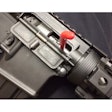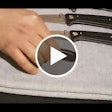Initiating a designated-shooter policy is designed to limit the number of rounds fired by multiple law enforcement officers at one time at the same subject.
When you initiate a designated-shooter policy, you assign the immediate responsibility to engage a potentially violent subject to a primary and secondary officer with a designated backup team of officers standing by in case the first two officers are unable to contain the situation.
Here's how the designated-shooter policy limits the number of rounds fired. In the presence of the violent armed EDP, an armed domestic violence offender or by any armed criminal, each officer present would technically be able to easily articulate that they were justified to open fire because they felt an imminent threat.
Under a designated-shooter policy, a primary officer, secondary backup officer and backup team are assigned to perform specific duties to prevent every cop present from opening fire at the same subject unless it's absolutely necessary.
Instead of having a perpetrator get shot at with 50 or 60 rounds from the firearms of a dozen or more LEOs, the designated shooter would open fire along with the designated secondary or backup shooter also opening fire if the engaged subject continued to pose a threat after being shot at by the primary designated shooter.
If the primary and secondary shooters stop the threat, then everyone else involved in this enforcement action will stand down. Should the armed individual or violent subject continue to engage the police after being engaged by the primary and secondary designated shooters, then the designated backup team would be cleared to open fire.
When it comes to using authorized deadly force, a law enforcement agency can still look bad in the eyes of the community, even when multiple officers can articulate that they felt that their life was in danger and opened fire. Officers often will not realize that every other officer or agent present felt the same way and opened fire for the same reason.
Using some type of designated shooter policy streamlines the police response to potential encounters, where the use of authorized deadly force is likely by assigning specific personnel to be responsible to do the shooting when and if they are justified to use such force. When executed correctly, a well rehearsed designated shooter policy can protect life and property while insuring officer safety as well.
My only concern with the designated shooter policy is what happens when the primary and secondary designated shooters fail to hit their target and the armed gunman or multiple active shooters return fire before the backup team of designated shooters can engage.
When shots are fired in a real-life situation, reaction times slow down and tunnel vision can also set in and impede the ability of law enforcement officers to see events clearly and react as quickly as they might do at the firing range.
Other than these concerns, I feel the designated-shooter policy should be implemented once law enforcement agencies train for the application of this policy and an evaluation team of firearms experts as well as police psychologists confirm that this type of response proves to have an incredibly high success rate.
Related:




















